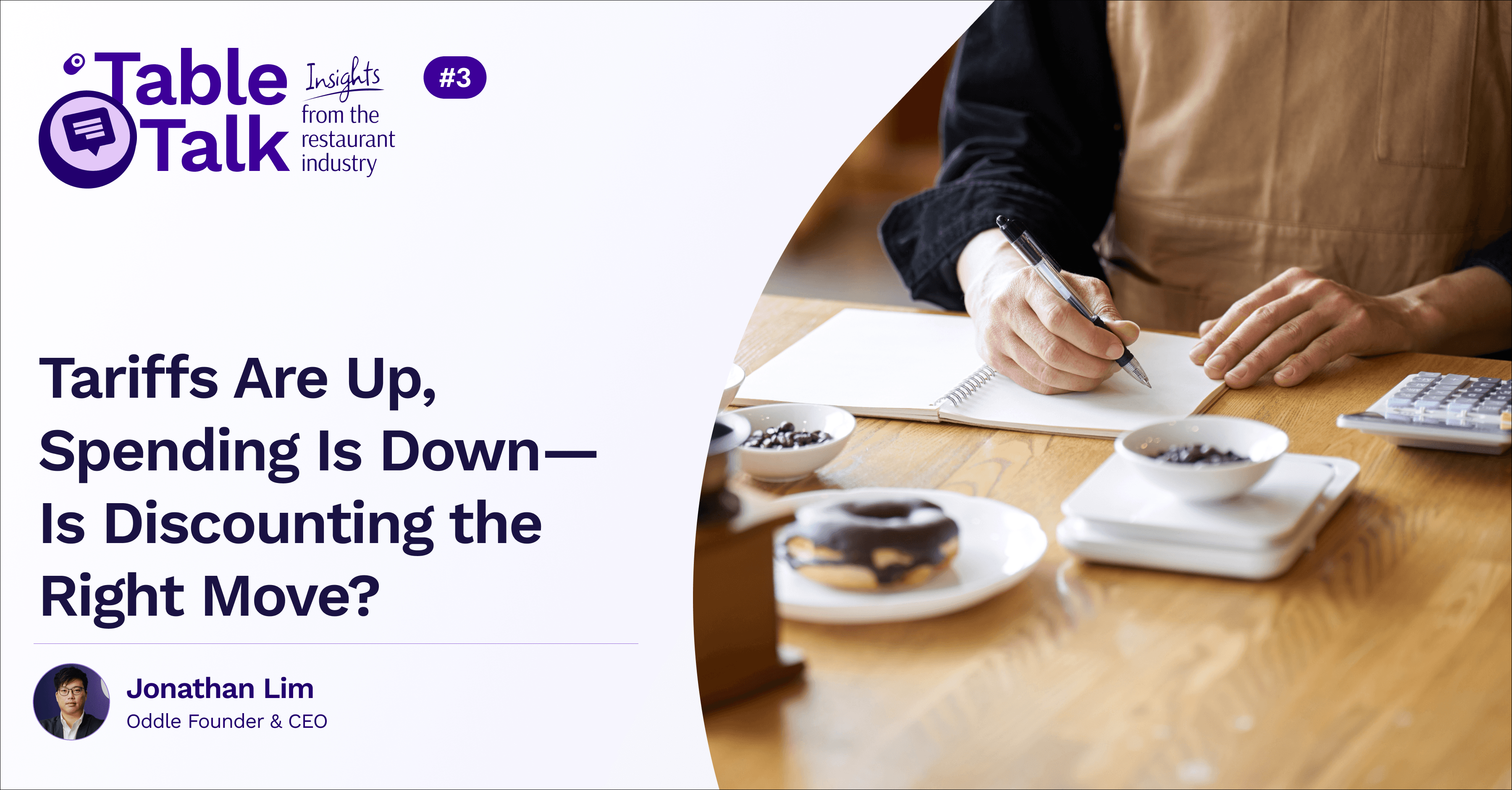Tariffs Are Up, Spending Is Down—Is Discounting the Right Move?
Tariffs are driving up food costs, and margins are getting squeezed. Discounting might seem like the easy fix—but it often does more harm than good. Read on for smarter, data-driven ways to boost traffic and protect your brand.

With tariffs pushing food costs up and consumer spending showing signs of cooling, restaurant owners are feeling pressure from both ends.
Margins are tighter. Footfall is softer.
And naturally, one question keeps popping up:
“Should I drop prices to boost sales? Maybe run a lunch set or early-bird promo?”
Discounting feels like the easiest lever to pull. But in many cases, it ends up doing more harm than good—especially if it’s the first move made in panic.
Let’s break down the thinking behind discounting, where it often goes wrong, and how to apply data-driven dynamic pricing the right way—without cheapening your brand.
Part 1: The Discount Trap
I recently spoke to a restaurant owner who was concerned about slow weekday lunch traffic.
His plan? Launch a permanent lunch set at a lower price point to drive more volume.
It sounds logical at first glance. After all:
Lower price → Higher quantity → More revenue
But this formula—P × Q = R (Revenue)—only works if quantity actually increases.
The problem? In many cases, it doesn’t.
And worse, the discount can backfire in subtle but damaging ways:
- Customers start to believe your lower price reflects the real value of your food
- You train people to wait for promotions
- You risk cheapening your brand, especially if you’re positioned mid-to-premium
Discounting isn’t just math—it’s perception.
Before pulling the price lever, I asked him something simple:
“Are you sure price is the problem? Or could it be that not enough people in the area even know your restaurant exists?”
If the issue is awareness, discounting won’t help. You’re just lowering price for a small, already-aware group—without increasing volume meaningfully.
That’s the real trap:
Discounting without first fixing discoverability is like turning down the price of a product no one is even browsing.
Part 2: When Discounts Can Work—And How to Do It Right
That said, discounts can work—but only if you’re surgical about it.
This is where dynamic yield pricing comes in.
When used correctly, it allows you to:
- Stimulate demand during specific low-volume windows
- Fill unused capacity without affecting peak-hour margins
- Drive volume while maintaining profitability
But it must be done with intention—and math.
Start With the Cost Structure
Here’s how a seemingly “small” discount can snowball:
Scenario A
- Menu Price: $100
- COGS: $20 (20%)
- 25% Discount → New Price: $75
- New Food Cost % = $20 / $75 = 26.6%
Still manageable.
Scenario B
- Menu Price: $100
- COGS: $30 (30%)
- 25% Discount → New Price: $75
- New Food Cost % = $30 / $75 = 40%
Now your margins are eroding fast.
The higher your food cost, the harder each discount hits.
That’s why the first rule of dynamic pricing is: know your blended COGS—by category.
Structure Discounts, Don’t Slash Blindly
If you move forward with a promotion, structure it smartly:
✅ Exclude high-margin items like drinks and desserts
✅ Limit discounts to better-margin ingredients
Include: chicken, pork, vegetables, duck
Avoid: seafood, premium beef, shellfish
✅ Create fixed-price set menus
Bundle well-performing, cost-efficient items and limit customisation
Think Like a Yield Manager
Every restaurant has peaks and troughs.
Use P × Q = R to make decisions like a hotel would:
- Peak hours – full price, no promo needed
- Off-peak hours – light incentives to nudge traffic
- Super off-peak – deeper discounts or set menus to fill idle time
But remember: Not every slow period is a pricing problem.
Sometimes it’s discoverability. Sometimes it’s poor menu clarity.
Discounts should be your last lever—not your first.
Final Thought: Food First, Always
Discounts might bring in a first-time diner.
But great food is what brings them back.
If the dish you’re discounting isn’t something they’ll crave again at full price, then no promotion will ever be profitable in the long run.
Taste is your greatest multiplier.
Everything else—ads, promos, loyalty—amplifies that foundation.
In Summary:
✔ Tariffs and cost pressure are real. Don’t react blindly—respond strategically
✔ Don’t discount by default. First, fix your visibility problem
✔ If you do discount, do it surgically. Know your margins, hours, and COGS
✔ Protect your brand. Long-term equity > short-term footfall
✔ Build around great food. No pricing trick beats product truth
If you’re debating whether to launch a promo—or wondering how to boost traffic without undermining your brand—we’re happy to walk through the numbers with you.
Until next time,
Jonathan Lim
Founder & CEO, Oddle